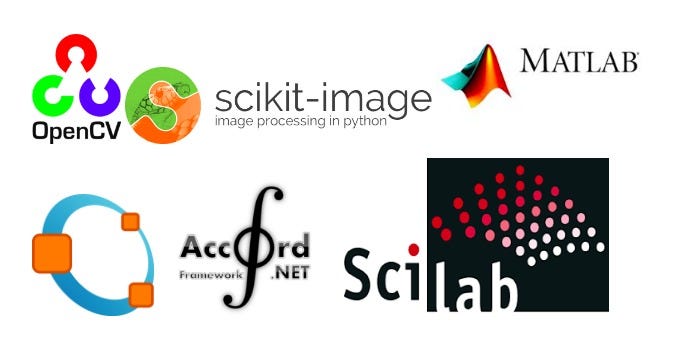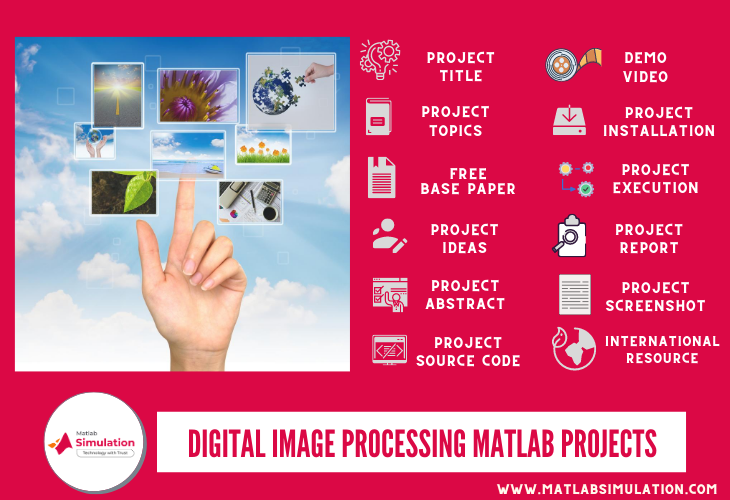Adobe Photoshop and GIMP are popular tools for digital image processing. Both offer powerful features for editing and enhancing images.
Digital image processing involves manipulating and improving images via software tools. These tools provide functionalities like cropping, resizing, color correction, and filtering. Adobe Photoshop is a widely-used, professional-grade software known for its comprehensive features. GIMP, an open-source alternative, also offers robust capabilities for image manipulation.
Other notable tools include Corel PaintShop Pro and Affinity Photo. These tools cater to both beginners and professionals, helping them achieve desired results in their projects. Choosing the right tool depends on user requirements and budget. Effective image processing enhances visual appeal and clarity, essential for various applications.
Introduction To Digital Image Processing
Digital Image Processing is a fascinating field. It involves using computers to modify images. These modifications can improve or analyze the pictures. The technology has grown rapidly in recent years.
The Evolution Of Photo Editing
Photo editing has come a long way. Early methods were manual and took lots of time. Then came the digital age. Computers made editing faster and easier. Today, software like Photoshop and GIMP are popular.
These tools offer many features. Users can crop, resize, and add effects. They can also remove red-eye and adjust colors. Modern tools are user-friendly and powerful.
Importance In The Modern Digital World
Digital Image Processing is crucial today. It is used in many fields. For example, in medicine, doctors use it to examine X-rays. In security, it helps in facial recognition.
Businesses use it for marketing. High-quality images attract customers. Social media relies on it for filters and effects. It makes content more engaging.
Here are some key benefits:
- Improves image quality
- Helps in data analysis
- Enhances user experience
| Tool | Purpose |
|---|---|
| Photoshop | Professional editing |
| GIMP | Open-source editing |
| Lightroom | Photo management |
Fundamentals Of Image Processing
Digital image processing involves manipulating images using computer algorithms. This field is essential for various applications like medical imaging, photography, and computer vision. Understanding the fundamentals of image processing can help in creating better visuals.
Pixels And Color Models
Images are made up of tiny dots called pixels. Each pixel represents a single point in the image.
Pixels are usually organized in a grid and can have different colors. These colors are often represented using color models.
Common color models include RGB, CMYK, and Grayscale.
- RGB: Uses Red, Green, and Blue colors.
- CMYK: Uses Cyan, Magenta, Yellow, and Key (Black).
- Grayscale: Uses shades of gray.
Basic Operations: Cropping, Resizing, And Rotating
Basic image operations are essential for effective image processing. These operations include cropping, resizing, and rotating images.
Cropping involves cutting out a portion of an image. This helps to focus on a specific area.
- Used to remove unwanted parts.
- Helps in focusing on important details.
Resizing changes the dimensions of an image. This helps in fitting the image into different spaces.
- Can make an image larger or smaller.
- Maintains the aspect ratio to avoid distortion.
Rotating involves turning an image by a certain angle. This can help in aligning the image correctly.
- Can rotate by 90, 180, or 270 degrees.
- Used for correcting the orientation of the image.
Popular Software For Professional Photo Editing
Professional photo editing requires robust software to create stunning visuals. Many tools provide powerful features to enhance digital images. Below, we explore some popular software for professional photo editing.
Adobe Photoshop: The Industry Standard
Adobe Photoshop is known as the industry standard for photo editing. It offers a wide range of features to edit and manipulate images.
- Layers: Organize your edits and effects.
- Filters: Add creative effects to your photos.
- Retouching tools: Remove blemishes and imperfections.
- Text tools: Add and customize text within your images.
Photoshop is used by professionals worldwide. It provides high-quality editing tools and flexibility. You can create anything from simple edits to complex designs.
Gimp: A Powerful Open-source Alternative
GIMP stands for GNU Image Manipulation Program. It is a powerful open-source alternative to Photoshop.
- Customizable interface: Tailor the workspace to fit your needs.
- Photo enhancement: Fix perspective distortion and vignetting.
- Digital retouching: Tools to remove minor details and imperfections.
- File formats: Supports various file types like JPEG, PNG, and TIFF.
GIMP is free to use and has a large community of users. It offers many features similar to Photoshop. It is suitable for both beginners and advanced users.
| Software | Key Features |
|---|---|
| Adobe Photoshop | Layers, Filters, Retouching tools, Text tools |
| GIMP | Customizable interface, Photo enhancement, Digital retouching, File formats |

Credit: rkpattnaik780.medium.com
Mobile Apps For On-the-go Editing
Editing images on the go has never been easier. Thanks to mobile apps, you can now enhance your photos anytime, anywhere. These apps offer powerful tools and user-friendly interfaces. Below, we explore two top mobile apps for on-the-go editing.
Snapseed: Comprehensive Editing In Your Pocket
Snapseed is a favorite for mobile photo editing. It offers a wide range of tools. You can adjust brightness, contrast, and saturation with ease. It also provides advanced features like selective adjustments. These allow you to edit specific parts of your image.
Snapseed supports both JPEG and RAW files. This makes it a great choice for professional photographers. It includes a variety of filters to enhance your photos. You can also save your editing steps as “looks” to apply later.
Key Features:
- 29 tools and filters
- Non-destructive editing
- RAW file support
- Selective adjustments
- Save personal looks
Vsco: Cult Favorite For Film-like Filters
VSCO is known for its stunning filters. These give your photos a film-like quality. The app offers both free and paid presets. This makes it versatile for any budget.
VSCO also features a built-in camera. This allows you to shoot and edit within the same app. The editing tools are simple yet powerful. You can adjust exposure, temperature, and skin tone.
Key Features:
- High-quality filters
- Basic editing tools
- Built-in camera
- Community for sharing photos
- Membership options for extra features
Online Tools For Quick Edits
Online tools for quick edits are a boon for many users. They help you edit images without downloading software. These tools save time and are easy to use. Let’s explore some popular options.
Canva: Simplified Design For Non-professionals
Canva is a user-friendly tool for non-professionals. It offers a wide range of templates and design elements. You can create stunning images with minimal effort.
- Drag-and-drop interface
- Thousands of free templates
- Customizable fonts and colors
- Pre-sized social media posts
Canva’s interface is intuitive. Even beginners can create professional-looking designs. This tool is ideal for social media posts, presentations, and more.
Fotor: Versatile Editing And Collage Making
Fotor is another versatile online tool. It offers comprehensive editing features and collage making. You can enhance photos, apply filters, and create collages easily.
| Feature | Description |
|---|---|
| Photo Editing | Basic and advanced editing tools |
| Collage Making | Various templates and styles |
| Beauty Retouching | Facial retouching tools |
| HDR Effects | High Dynamic Range filters |
Fotor provides a wide range of features. It is perfect for both basic and advanced editing. The collage maker is fun and easy to use. This tool helps you create eye-catching visuals in no time.

Credit: transformainsights.com
Advanced Techniques For Image Enhancement
Digital image processing has revolutionized the way we enhance photos. Advanced techniques can turn a simple snapshot into a stunning visual masterpiece. This section explores some of the most effective tools for image enhancement. These methods will help you achieve professional-level edits.
Layering And Masking For Complex Edits
Layering and masking are powerful tools for complex image edits. Layers let you stack multiple images or effects on top of each other. Each layer can be edited independently without affecting the others. This allows for intricate edits and detailed adjustments.
Masks help hide or reveal parts of a layer. By using masks, you can blend different elements seamlessly. This is useful for creating composite images or adjusting specific areas of a photo. Masks are usually in black and white, where black hides and white reveals.
Here is a simple example of how layering and masking work:
| Layer | Effect |
|---|---|
| Background Layer | Original image |
| Layer 1 | Color correction |
| Layer 2 | Detail enhancement |
| Mask | Blending specific areas |
Color Correction For Perfect Tones
Color correction is crucial for achieving perfect tones in your images. This process involves adjusting the colors to make the image look more natural or to achieve a specific effect.
- White Balance: Adjusts the color temperature to make whites appear true.
- Exposure: Controls the brightness of the image.
- Contrast: Enhances the difference between light and dark areas.
- Saturation: Adjusts the intensity of colors.
- Hue: Changes the overall color of the image.
Using these tools, you can correct any color issues and make your photos more appealing. Whether you want to fix a poorly lit photo or create a specific mood, color correction is your go-to technique.
Artificial Intelligence In Image Processing
Artificial Intelligence (AI) is revolutionizing digital image processing. It enhances images, making them more vibrant and clear. AI tools can quickly edit and improve photos, saving time and effort. These tools are now essential in professional editing.
Automated Enhancements With Ai
AI can automatically adjust brightness, contrast, and color balance. This makes photos look more professional without manual effort. AI-driven tools can also remove noise and sharpen images. This enhances the quality of digital images.
Some AI tools can even recognize faces and enhance them separately. This ensures that every part of the image looks its best. Automated enhancements with AI bring a new level of precision to image editing.
Future Of Ai In Professional Editing
AI will continue to evolve and improve. Future tools will be more advanced and accurate. They will offer more features like object recognition and background removal. This will make professional editing faster and easier.
AI will also integrate with other technologies like virtual reality and augmented reality. This will create new possibilities for digital image processing. The future of AI in professional editing is exciting and full of potential.
Here is a table summarizing some key AI tools for image processing:
| Tool Name | Key Features | Use Case |
|---|---|---|
| Adobe Sensei | Auto-tagging, smart cropping, face recognition | Professional photo editing |
| DeepArt | Style transfer, artistic filters | Creative image enhancements |
| Remove.bg | Automatic background removal | Product photography |
AI in image processing is transforming the way we edit and enhance photos. It makes tasks easier, faster, and more efficient.

Credit: matlabsimulation.com
Extending Functionality With Plug-ins And Extensions
Extending functionality with plug-ins and extensions enhances digital image processing tools. These additions allow for custom features and tailored workflows. Discover top plug-ins for Photoshop and community-created extensions for GIMP.
Top Plug-ins For Photoshop
Photoshop is a powerful tool, and plug-ins make it even better. Below are some of the top plug-ins that can elevate your work:
- Nik Collection: Offers stunning filters and editing capabilities. It’s a favorite for professional photographers.
- Portraiture: Simplifies the process of skin retouching. It is essential for portrait photographers.
- ON1 Effects: Provides a variety of filters and preset options. It helps in achieving unique effects quickly.
- Topaz Labs: Known for its AI-powered tools. Ideal for enhancing images with minimal effort.
- Photomatix: Specializes in HDR photography. It combines multiple exposures to create stunning images.
Expanding Gimp With Community-created Extensions
GIMP is a versatile open-source image editor. Community-created extensions make it even more powerful. Here are some popular GIMP extensions:
- G’MIC: A comprehensive set of filters and effects. It adds over 500 new features to GIMP.
- Resynthesizer: Useful for texture synthesis and seamless cloning. It is similar to Photoshop’s Content-Aware Fill.
- BIMP: Batch Image Manipulation Plugin allows bulk editing. It is perfect for processing multiple images at once.
- Liquid Rescale: Enables content-aware resizing. It helps in adjusting images without distorting important content.
- Layer Effects: Mimics Photoshop’s layer styles. It provides effects like bevel, emboss, and drop shadow.
Using these plug-ins and extensions, you can extend the functionality of your image processing tools. They make tasks easier and enhance your creative potential.
Learning Resources And Communities
Digital image processing is a complex field. Learning resources and communities can help you master it. Below, we’ll explore various resources and communities. These can boost your skills and provide support.
Online Tutorials For Skill Improvement
Online tutorials are a great way to learn digital image processing. They offer structured lessons and hands-on practice. Here are some popular platforms:
- Coursera: Offers courses from top universities.
- Udemy: Various courses at different skill levels.
- YouTube: Free tutorials from experienced professionals.
- Khan Academy: Provides clear and concise lessons.
Many platforms also offer certification. This can boost your resume and job prospects.
Forums And Groups For Feedback And Support
Joining forums and groups can be very helpful. They provide feedback and support from peers and experts. Here are some popular online communities:
- Stack Overflow: A go-to place for coding questions.
- Reddit: Subreddits like r/digital_art and r/Photoshop.
- Quora: Get answers from industry experts.
- Facebook Groups: Many niche groups for image processing.
These communities can help you solve problems and improve your skills. Engage actively to get the most benefit.
Below is a table summarizing the learning resources and communities:
| Type | Platform | Benefits |
|---|---|---|
| Online Tutorials | Coursera, Udemy, YouTube, Khan Academy | Structured lessons, hands-on practice, certifications |
| Forums and Groups | Stack Overflow, Reddit, Quora, Facebook Groups | Feedback, support, problem-solving, skill improvement |
Ethical Considerations And Best Practices
In the realm of digital image processing, ethical considerations are paramount. Artists and photographers must navigate the fine line between creativity and manipulation. Best practices ensure transparency and honesty. They also maintain the integrity of the original work. This section will explore these ethical considerations and best practices.
Manipulation Ethics In Photography
Photographers often use digital tools to enhance their images. These tools can correct colors, adjust lighting, and remove imperfections. But manipulating images too much can mislead viewers. Here are some best practices for ethical manipulation:
- Transparency: Always disclose significant edits.
- Accuracy: Ensure the image represents reality.
- Respect: Do not alter subjects in a disrespectful manner.
Photographers should also consider the impact of their edits. Over-manipulation can distort the truth. It can also affect the credibility of the photographer.
Maintaining Authenticity In Digital Art
Digital artists have more freedom in their creations. But they still face ethical challenges. Maintaining authenticity is crucial. Here are some tips:
- Originality: Use your own work as a base.
- Attribution: Give credit to any external resources used.
- Honesty: Be honest about the tools and techniques used.
Authenticity builds trust between the artist and the audience. It also ensures that the work is respected and valued. Digital artists should strive to create unique and honest pieces.
In both photography and digital art, ethics play a vital role. Following best practices helps maintain the integrity of the work. It also ensures that the audience trusts and respects the artist.
Frequently Asked Questions
What Are The Tools Used In Digital Image Processing?
Digital image processing tools include Adobe Photoshop, GIMP, MATLAB, ImageJ, and Corel PaintShop Pro. These tools offer various features for editing, enhancing, and analyzing images.
Which Software Is Used For Digital Image Processing?
Popular software for digital image processing includes Adobe Photoshop, GIMP, and MATLAB. These tools offer robust features for editing and analysis.
What Are The 3 Types Of Digital Image Processing?
The three types of digital image processing are image enhancement, image restoration, and image compression. Image enhancement improves visual appearance. Image restoration corrects distortions and noise. Image compression reduces file size for storage and transmission.
What Technology Is Used In Digital Image Processing?
Digital image processing uses technologies like machine learning, deep learning, computer vision, and image recognition algorithms.
Conclusion
Mastering digital image processing requires the right tools. These tools enhance efficiency and creativity. Choose the ones that best fit your needs. Stay updated with the latest advancements for optimal results. With the right resources, achieving professional-quality images becomes easier.
Embrace these tools to elevate your digital image processing skills.



